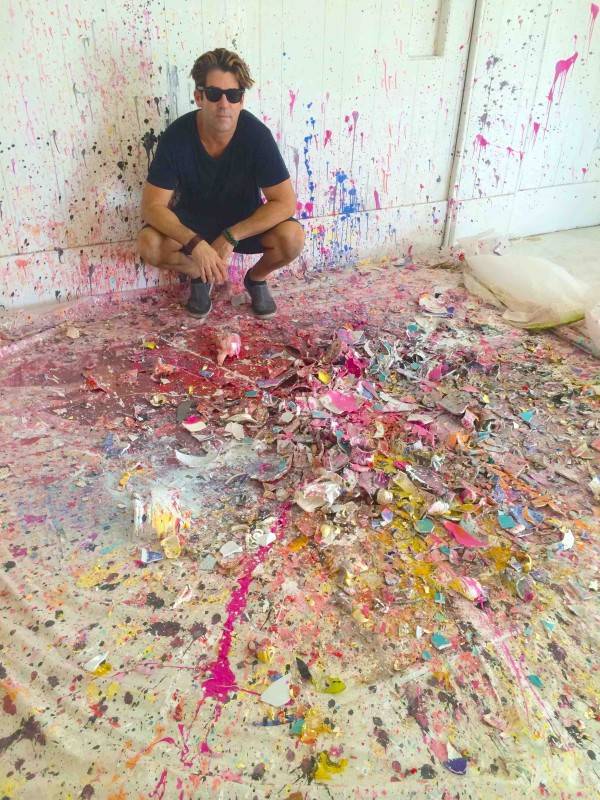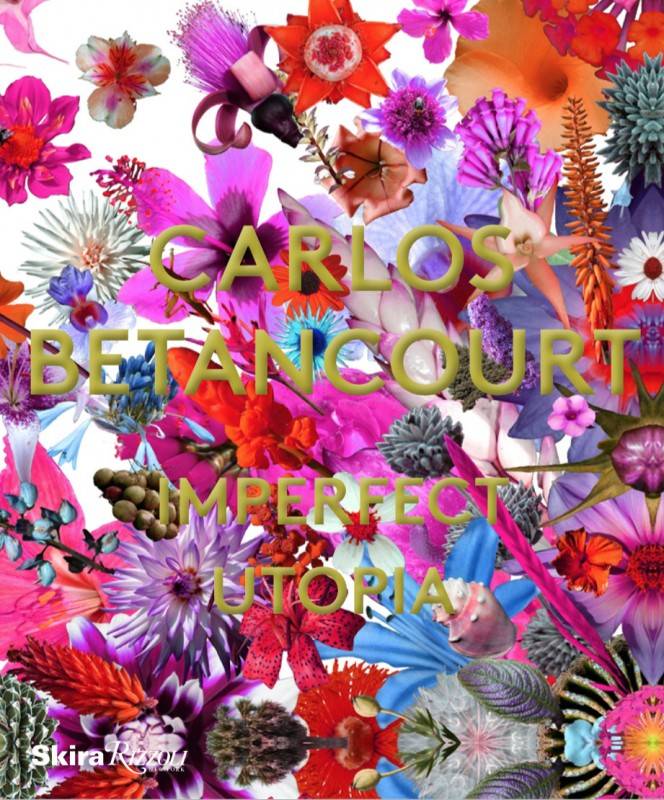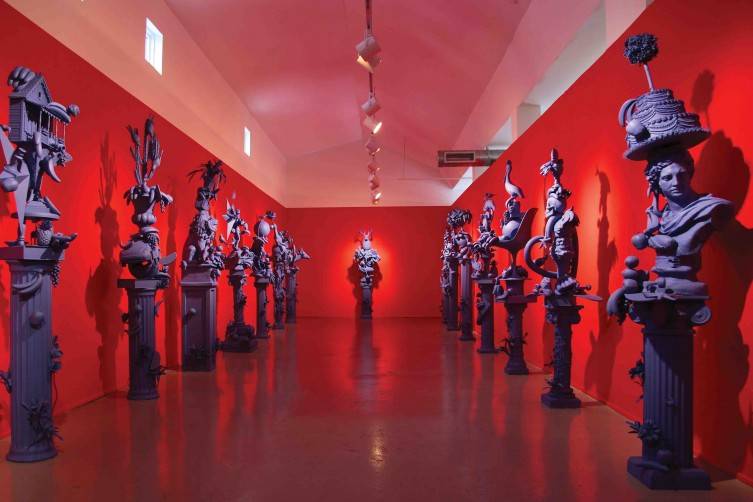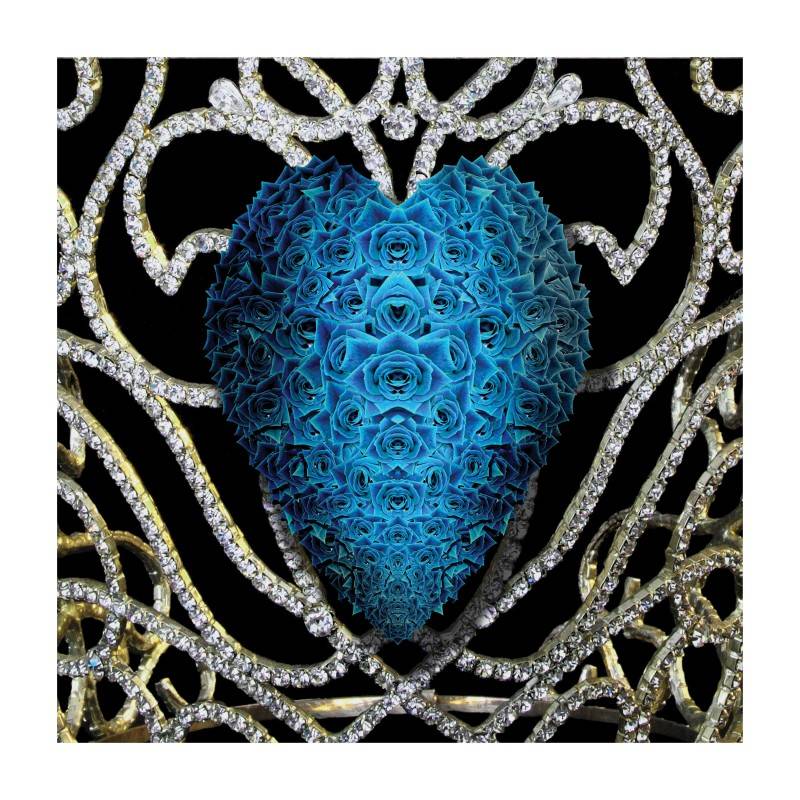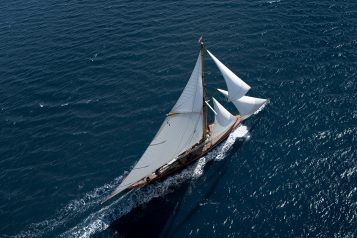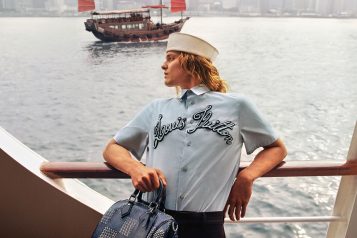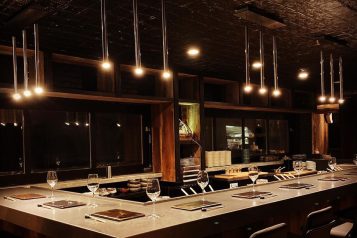Miami artist Carlos Betancourt is getting ready to reach a new high in his already hot career. This month, Rizzoli is releasing a 200-page book of Betancourt’s work, titled Imperfect Utopia. The name comes from Betancourt’s Miami studio, open since the 80’s, and a forerunner on Miami’s art scene.
The tome features hundreds of illustrations and gives readers a big window on the evolution of the artists kaleidoscopic work that pulls from the Caribbean and American culture across racial and language boundaries.
The book is ahead of Betancourt’s mid-career solo exhibit opening at the Museo de Arte Contemporáneo de Puerto Rico on November 18. The exhibition is titled Re-Collections, and is significant because the artist was born in Puerto RIco, and it’s colorful influence plays heavily in his work.
HH: Tell us how you think your work has evolved over your career?
CB: I have mostly explored issues of memory, beauty and nature in my work, from the Assemblages series of the 1990’s, to more recent works such El Portal series from 2011. There have been many constants, that include large-scale works printed on vinyl and dividing my attention between a variety of mediums.
Painting, photography, sculpture, silk screening, assemblages and furniture design were my primary mediums in the late 1980s and throughout the 1990s. At the fin de siécle, I started focusing more on photography, but I have always been a multi-media artist, and the last ten years more so than ever. Merging and fusing all that moves me remains a constant. All these works are a way of re-interpreting the past.
Something interesting happened when Skira/Rizzoli was working on the Imperfect Utopia book layout. They placed two artworks together that were strikingly similar, except one I created in 1992 and the other in 2012. These were unique periods for me personally, with very different things occurring in my life.
CB: [It’s most important] to achieve what is completed already in my mind’s eye. Spontaneity, composition, mystery, poetry are also important to me — as well as more questions.
HH: How has Miami figured into your art?
CB: The overall culture of Puerto Rico shaped early ideas of blending, layering and mixing, as well as my profound love for nature. I have collages in my head all the time. Miami, and Florida’s culture — from Ponce de Leon and the Fountain of Youth, to Morris Lapidus, the Tequesta Indians and Disney World — reinforced all of this.
South Beach’s underground culture of the ‘80s and ‘90s, and the artists of that time were also very important. I naturally embraced my surroundings and they embraced me back.
HH: What is your favorite kind of piece to create?
CB: This is difficult for me to answer; while my favorite piece is usually my most recent, I am very inspired by the realm of the unexplored. Sometimes, I look back at a favorite series and wonder what it would be like to re-examine it again, such as the Interventions in Nature series, El Portal Series and the sculptures from Portrait of a Garden. Yet, I believe that each series dwells in mysteries of the moment in which they were produced.
HH: You are from Puerto Rico, is the exhibition it a bit of a homecoming?
CB: It is kind of the natural progression, the icing on the cake. I travel constantly to La Isla and I understand how difficult and rare these opportunities are and I am very grateful and honored to have this exhibit. A lot of people have worked very hard for this to become a reality.
HH: How long does it take to install pieces like Appropriations from El Rio: As Times Goes By?
CB: Normally two to three days. But the process of installation is so rewarding that we installed this particular suspended sculpture in 20 continuous work hours. This artwork is a 3-dimensional, re-interpretation of a 2-dimensional artwork series titled Re-Collections. Architect Alberto Latorre, who is also my studio director suggested this idea. It’s an appropriation of my own past artwork. The work includes relics from the Miami River that merge and blend with contemporary objects, provoking new meanings.
HH: What are your favorite spots in Miami?
CB: I enjoy spending time in my house and neighborhood around El Portal. We like having our friends over for conversation, dinner and a bit of dancing to my favorite music in our house when we are in town and have free time. Otherwise, I love to pick up seashells, being on the sea, and visiting Fairchild Tropical Gardens, museums, antique stores as well as thrift shops. I enjoy learning and reading a lot, specially about history or biographies. This year I would like to learn to waltz.







